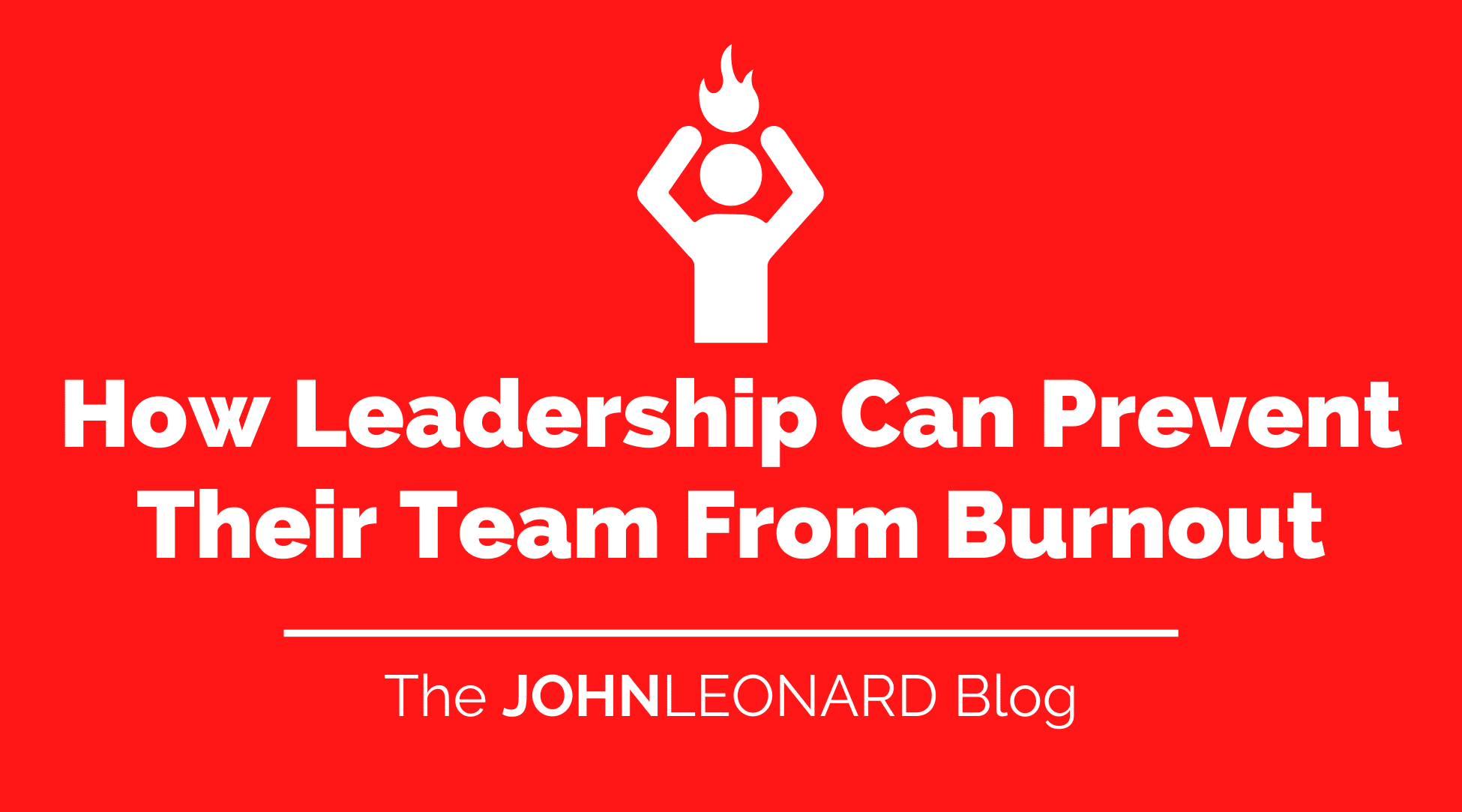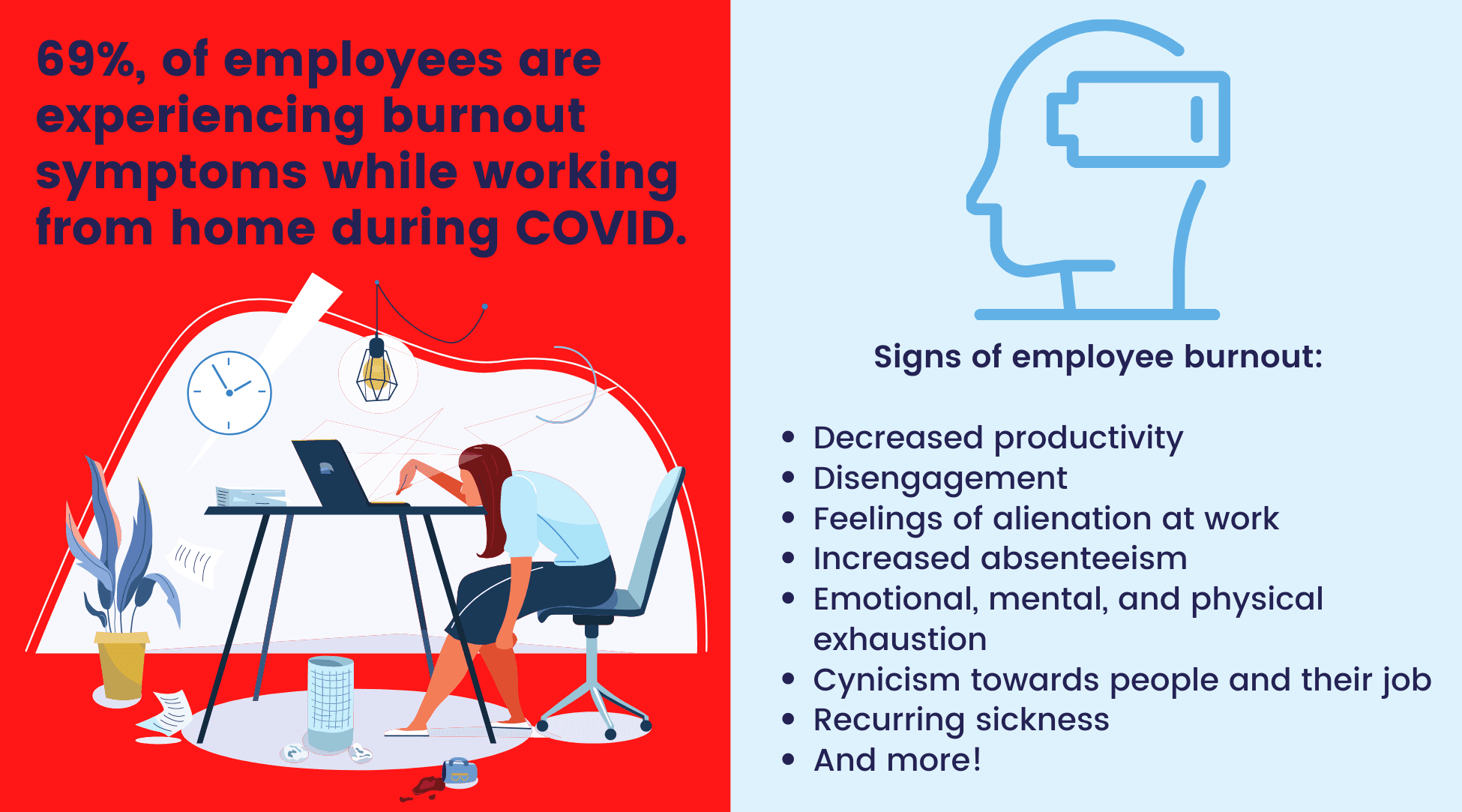
By now, one year into the pandemic, we’ve all heard the term employee burnout. Whether you’ve experienced it yourself during the past twelve months or know someone who has, this phenomenon has negatively affected millions of people worldwide. According to the World Health Organization’s (WHO) International Classification of Diseases (ICD), people experiencing burnout typically feel exhaustion but, are also likely to feel detached or cynical about their job. Job burnout can affect your physical and mental health directly related to health conditions, such as depression.
Burnout can manifest itself in different ways but currently, the most common reason for increased stress stems from the coronavirus pandemic. The pandemic has caused historic setbacks. Many people have faced challenges like the uncertainty of jobs, business closures, economic disruption, lack of resources, the unknowns about the virus, and much more. All of these factors can leave one feeling stressed, frustrated, angry, and exhausted.
According to a survey by Monster, over two-thirds, or 69%, of employees are experiencing burnout symptoms while working from home during COVID. Signs of employee burnout can include:
-
- Decreased productivity
- Disengagement
- Feelings of alienation at work
- Increased absenteeism
- Emotional, mental, and physical exhaustion
- Cynicism towards people and their job
- Recurring sickness
- And more!
For organization leaders, it’s imperative to recognize and address when an employee is experiencing job burnout. Whether your employees have remained at work, continue to work remotely, or are transitioning back to the office, there are ways you can help alleviate burnout and support your employees without being too invasive.
Listen
Listening to what your employees are struggling with at home and work is the first step to managing burnout. As a leader, it’s important to be empathetic and show support for your employees’ concerns. Everyone’s situations are different right now and by acknowledging what they’re going through, you’ll help validate and normalize their feelings and emotions.
If you’re concerned about an employee’s mental health, offer additional mental health solutions. The Center for Workplace Mental Health is a great resource for information and tools.
Promote a healthy work-life balance
Remind your employees that they need to prioritize their physical and mental health. Share the different things that you’ve found helpful. Encouraging behavior that supports a healthy work-life balance will lead employees to do the same. By implementing a more flexible schedule, employees will be more inclined to take breaks throughout the workday and not work long hours. These stress-reducing suggestions will allow employees to recharge.
Help manage workload
If employees are saying their workload has been unmanageable during the pandemic, help assist them. Many deadlines and projects have been changed throughout the last year which can increase an employee’s workload causing them to work longer hours. Help prioritize tasks and provide clear, realistic expectations and make sure those expectations are understood.
Hectic work schedules can add to stress levels and work. To avoid ‘Zoom fatigue’, try reducing the number of video conferences throughout the day and focus on what needs to get accomplished for the day.
Encourage time off
Taking time off is key to avoiding burnout. Employees may be fearful or overwhelmed to ask for time off due to job security. A survey by Monster found, 81% of workers are concerned about their job security in light of coronavirus. And 52% of respondents aren’t planning to take time off or vacation time during the pandemic despite facing burnout. If employees haven’t taken time off in a while, encourage them to take a day or a few days to decompress. Like most things, it starts at the top of the organization. If managers aren’t taking time off for themselves, no one will.
Provide resources
Ensure employees have the resources they need. If you don’t already have one in place, consider implementing a wellness program or employee assistance program. Or redesign an existing employee health management initiative. A complete wellness program encompasses both physical and mental well-being. Here is the list of the nation’s top corporate wellness companies to check out.

By recognizing burnout, offering sincere support and making your employees feel valued, and leading by example, you’ll help alleviate stress so your employees can focus on what they do best.
For more advice on how your organization can succeed, subscribe to The JOHNLEONARD Blog below!
